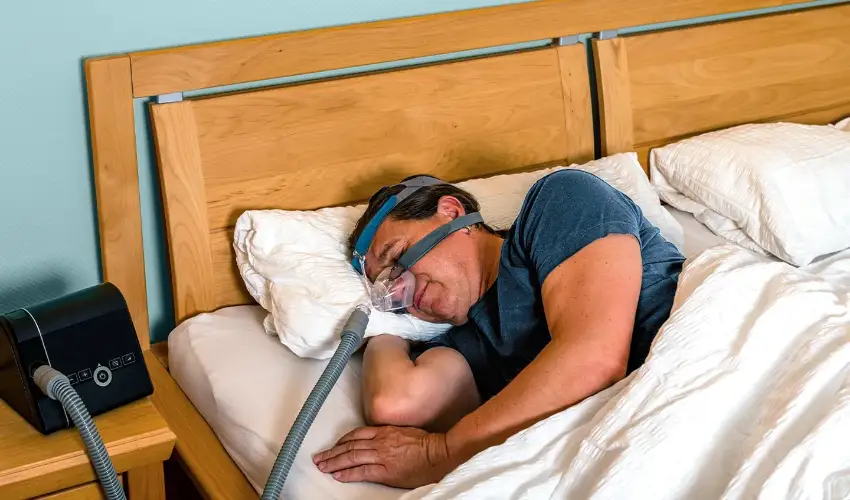Sleep apnea is a serious condition that affects millions of people worldwide. Characterized by repeated interruptions in breathing during sleep, sleep apnea can lead to fatigue, headaches, high blood pressure, and even heart problems. One of the most effective ways to manage this condition is through the use of sleep apnea machines. Understanding how these machines work, their types, benefits, and maintenance is crucial for anyone diagnosed with sleep apnea.
What is a Sleep Apnea Machine?
A sleep apnea machine, often referred to as a CPAP (Continuous Positive Airway Pressure) machine, is a medical device designed to help people with sleep apnea breathe more easily while sleeping. The device delivers a steady stream of air through a mask, keeping the airway open and preventing interruptions in breathing. By doing so, it ensures a restful and uninterrupted night’s sleep.
Types of Sleep Apnea Machines
There are several types of sleep apnea machines available, each suited to different needs:
- CPAP Machines: These are the most common devices. CPAP machines provide continuous, fixed air pressure to keep the airway open. They are highly effective for most patients with obstructive sleep apnea.
- APAP Machines (Automatic Positive Airway Pressure): APAP machines automatically adjust the air pressure throughout the night based on the user’s needs. They are ideal for people whose airway obstruction varies during sleep.
- BiPAP Machines (Bilevel Positive Airway Pressure): BiPAP machines provide two levels of pressure: a higher pressure when inhaling and a lower pressure when exhaling. These machines are often recommended for people who cannot tolerate CPAP therapy or have central sleep apnea.
How Sleep Apnea Machines Work
The main purpose of sleep apnea machines is to keep the airway open. When you sleep, the muscles in your throat relax, which can cause the airway to collapse. Sleep apnea machines use pressurized air to prevent this collapse. The mask is placed over your nose or mouth, or both, and connected to the machine via a flexible hose. Modern machines are designed to be quiet and comfortable, minimizing sleep disruption.
Benefits of Using Sleep Apnea Machines
Using a 呼吸機 sleep apnea machine consistently can have numerous health benefits:
- Improved Sleep Quality: By preventing interruptions in breathing, these machines ensure deeper and more restorative sleep.
- Reduced Daytime Fatigue: Patients often report feeling more energetic and alert during the day.
- Lower Risk of Heart Problems: Treating sleep apnea reduces the risk of high blood pressure, heart attack, and stroke.
- Better Mood and Mental Health: Quality sleep can improve cognitive function and reduce irritability or depression associated with sleep apnea.
- Enhanced Focus and Productivity: With proper rest, users experience better concentration and overall performance in daily activities.
Choosing the Right Sleep Apnea Machine
Selecting the right machine depends on several factors:
- Severity of Sleep Apnea: Your doctor will determine the type and pressure settings based on your sleep study results.
- Comfort and Fit: The mask should fit comfortably and not cause irritation. Nasal pillows, full-face masks, and nasal masks offer different levels of comfort.
- Portability: If you travel frequently, consider lightweight and compact machines.
- Noise Levels: Modern machines are designed to operate quietly, but it’s still essential to choose a model with minimal noise.
Maintenance and Care
Proper maintenance of your sleep apnea machine ensures its effectiveness and longevity:
- Daily Cleaning: Wash the mask and tubing daily to prevent bacteria buildup.
- Weekly Cleaning: Clean the humidifier chamber and air filters weekly.
- Replace Parts: Replace masks, tubing, and filters as recommended by the manufacturer, usually every 3–6 months.
- Regular Checkups: Consult your doctor regularly to adjust pressure settings or address any issues.
Tips for First-Time Users
Starting CPAP therapy can be challenging, but a few tips can make the transition smoother:
- Use it Consistently: Even short naps benefit from using the machine.
- Practice Wearing the Mask: Wearing the mask for short periods during the day can help you get used to it.
- Adjust Settings Gradually: Some machines allow ramp settings, which gradually increase air pressure to make breathing more comfortable.
- Address Side Effects: Dry mouth, nasal congestion, or skin irritation can often be managed with humidifiers or mask adjustments.
Conclusion
Sleep apnea machines are a life-changing solution for those struggling with disrupted sleep. By keeping the airway open and promoting consistent breathing, these machines improve sleep quality, enhance daily energy, and reduce serious health risks. Whether you are considering a CPAP, APAP, or BiPAP machine, consulting with your doctor and choosing the right device for your lifestyle is crucial. With proper use and maintenance, a sleep apnea machine can significantly enhance your quality of life and help you enjoy restful, uninterrupted sleep every night.
Investing in the right sleep apnea machine is not just about better sleep—it’s about better health and a more energetic, productive life.



